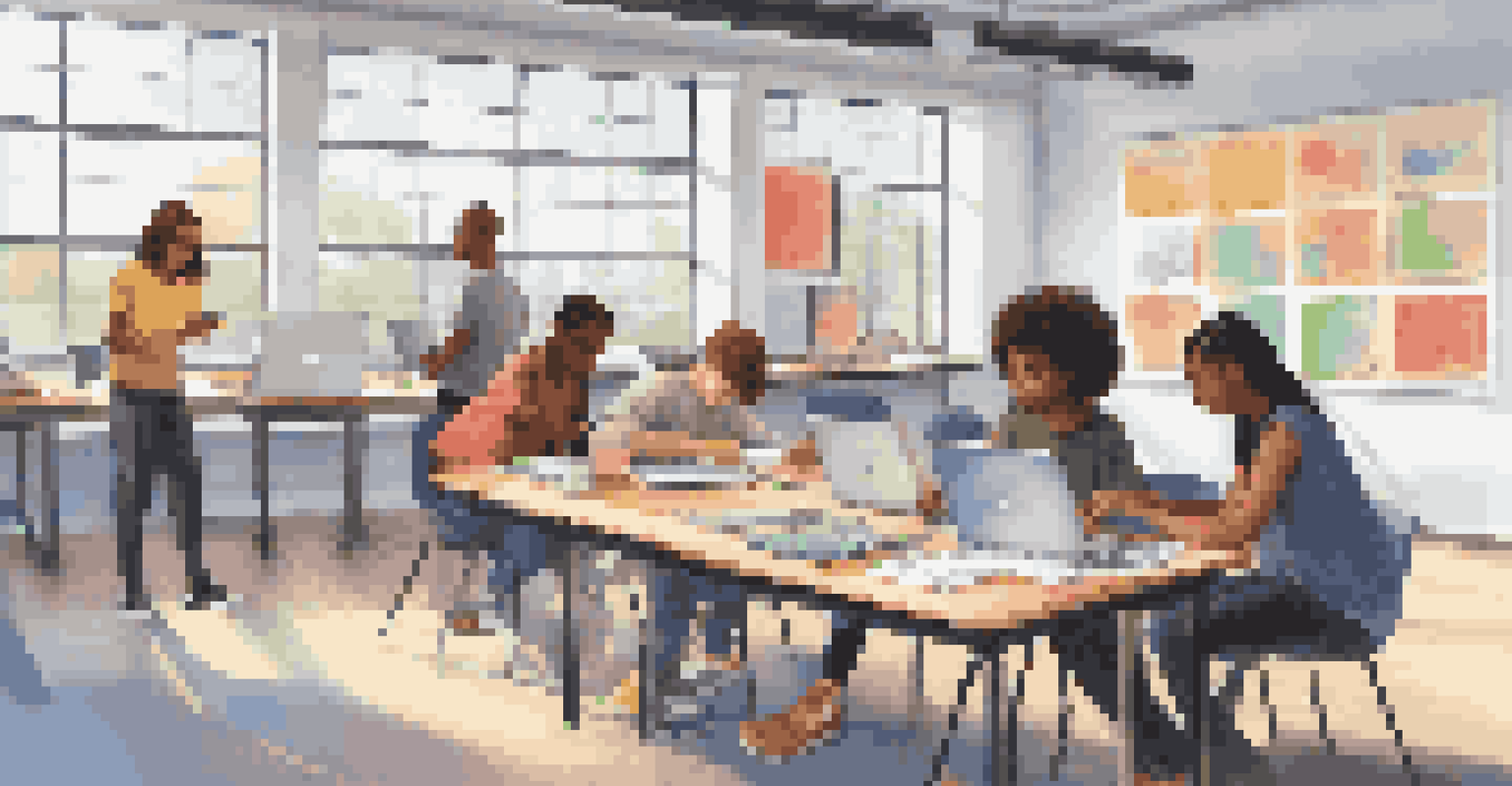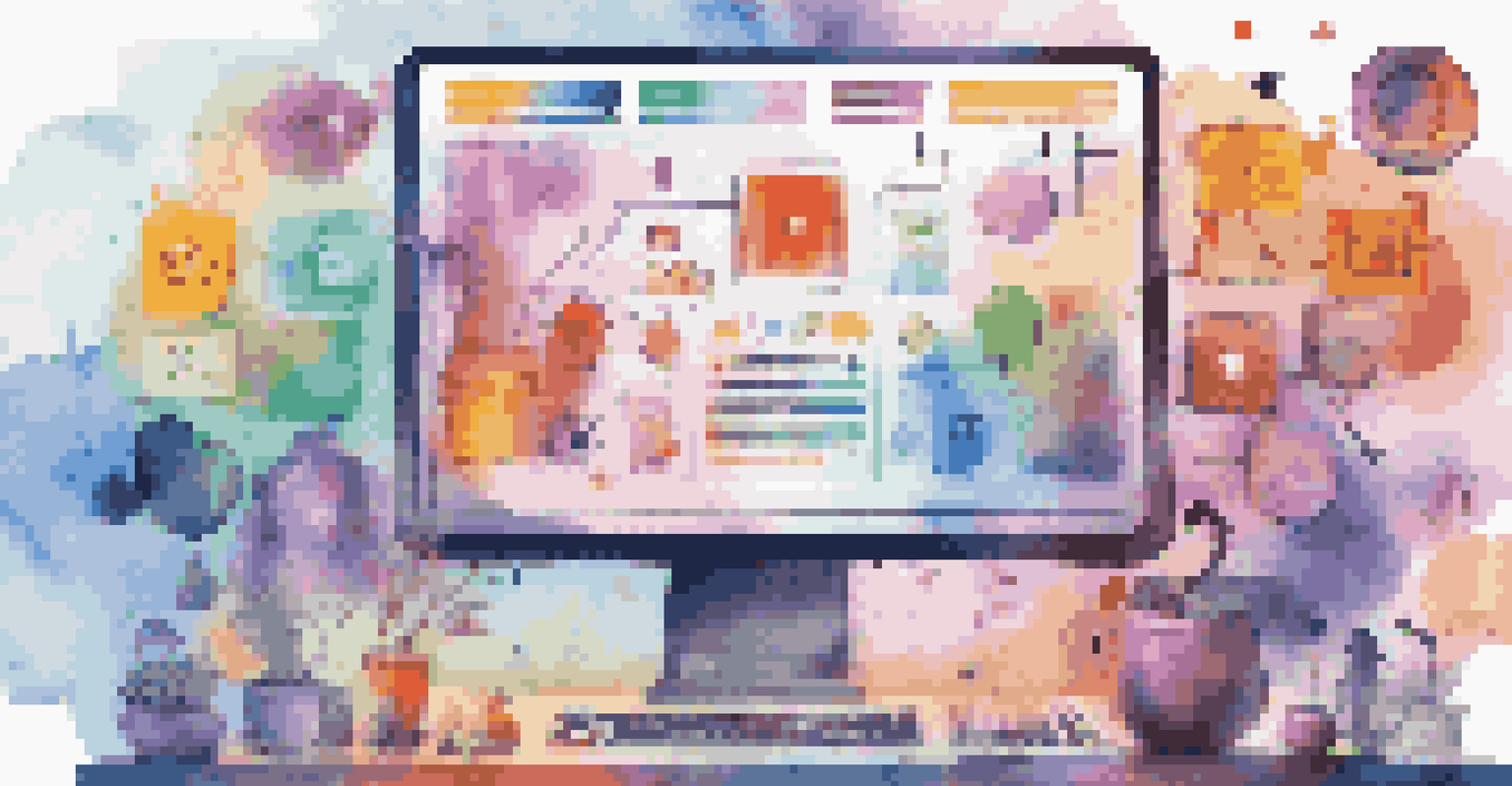Digital Portfolios: A Platform for Student Voice and Choice

Understanding Digital Portfolios and Their Importance
Digital portfolios are online collections of a student's work and achievements. They serve as a reflection of a student's learning journey, showcasing skills, projects, and accomplishments. By using digital portfolios, students can demonstrate not just what they know but how they think and create.
The best way to predict the future is to create it.
These portfolios offer a platform for students to express their unique voices and choices in their educational experiences. Instead of traditional assessments, digital portfolios allow for creativity and personalization, making learning more engaging. They can include various artifacts, such as essays, videos, and art projects, all in one accessible place.
In an increasingly digital world, having a portfolio is essential for students. It prepares them for future educational and professional endeavors by teaching them to curate their work thoughtfully. This practice not only helps in personal branding but also fosters ownership of their learning.
Fostering Student Voice Through Digital Portfolios
Student voice is crucial in education; it refers to the perspectives and opinions students have about their learning experiences. Digital portfolios empower students to express these voices by allowing them to choose what to include and how to showcase it. This autonomy boosts their confidence and engagement in learning.

When students curate their portfolios, they reflect on their experiences and choices, which deepens their understanding. For example, a student might choose to highlight a project that resonated with them emotionally, sharing insights into their thought process. This kind of reflection can lead to meaningful discussions between students and educators.
Digital Portfolios Showcase Learning
Digital portfolios serve as a comprehensive collection of a student's work, reflecting their skills and learning journey.
Furthermore, digital portfolios create opportunities for peer feedback and collaboration. Students can share their work with classmates, receiving constructive criticism and encouragement. This interaction not only builds a sense of community but also helps enhance their communication skills.
Encouraging Student Choice in Learning Experiences
Digital portfolios allow for significant student choice in how they demonstrate their learning. This flexibility can motivate students to engage more deeply with their subjects, as they can select projects that interest them. For instance, a student passionate about photography might choose to showcase their work rather than write a traditional paper.
Education is not the filling of a pail, but the lighting of a fire.
When students have a say in their learning paths, they develop critical thinking and decision-making skills. This choice not only makes learning more relevant but also encourages a growth mindset, as students navigate challenges in their chosen projects. It’s about empowering them to take charge of their educational journey.
Additionally, this choice extends beyond just the content; students can also select the format of their portfolios. Whether it’s a website, video presentation, or a digital scrapbook, the medium becomes part of their self-expression. This variety keeps the learning process fresh and exciting.
Enhancing Creativity and Critical Thinking Skills
Digital portfolios are not just about documentation; they are powerful tools for enhancing creativity. As students curate their work, they explore various ways to present their ideas, fostering innovative thinking. This creative process can lead to new skills and insights that traditional assessments may not encourage.
Moreover, the process of selecting and organizing work fosters critical thinking. Students must evaluate what represents their best work and how to communicate their learning effectively. For example, when faced with multiple project options, they must analyze which best showcases their strengths and learning outcomes.
Empowering Student Voice and Choice
By allowing students to select their projects and presentation formats, digital portfolios enhance engagement and foster autonomy in learning.
By engaging with their portfolios, students learn to articulate their thoughts and reflect on their learning processes. This practice not only enhances their academic skills but also prepares them for real-world problem-solving. In today’s fast-paced environment, the ability to think critically and creatively is invaluable.
Building a Lifelong Learning Habit
Creating and maintaining a digital portfolio encourages lifelong learning habits. When students regularly update their portfolios with new projects and reflections, they cultivate a habit of self-assessment and continuous improvement. This practice is essential in a world where skills and knowledge evolve rapidly.
As students reflect on their work over time, they gain insights into their growth and areas for improvement. This reflective practice helps them set future goals, making learning an ongoing journey rather than a series of isolated tasks. For instance, they may realize they need to develop better collaboration skills after reviewing group projects.
Furthermore, digital portfolios can follow students into higher education and their careers. They become a living document of their learning journey, showcasing their adaptability and commitment to personal growth. This aspect not only benefits students but also impresses potential employers or admissions committees.
Facilitating Teacher-Student Collaboration
Digital portfolios enhance collaboration between students and teachers, creating a more interactive learning environment. Teachers can provide ongoing feedback as students build their portfolios, guiding them in their learning process. This real-time interaction strengthens the teacher-student relationship.
By reviewing digital portfolios, teachers gain insights into each student's interests, strengths, and areas for growth. This understanding allows for tailored instruction that meets individual needs. For example, if a teacher sees a particular passion for a subject in a student's portfolio, they might provide additional resources or opportunities related to that interest.
Fostering Lifelong Learning Habits
Maintaining digital portfolios encourages self-assessment and continuous improvement, essential for adapting to a rapidly changing world.
Moreover, this collaborative approach promotes accountability. Students are more likely to take ownership of their learning when they know their work will be reviewed and discussed. This engagement creates a supportive learning community where students feel valued and motivated.
The Future of Digital Portfolios in Education
As technology continues to evolve, the role of digital portfolios in education will likely expand. They are becoming an integral part of modern learning environments, reflecting a shift towards student-centered education. Schools are increasingly recognizing the value of these portfolios in showcasing student progress.
Future developments may include enhanced features for collaboration, such as integrating social media or project management tools. These advancements could further enrich the learning experience, making it even easier for students to engage with their portfolios and share their work. Imagine students collaborating on projects in real-time from anywhere in the world!

Ultimately, digital portfolios represent a transformative approach to education. They not only empower students to take control of their learning but also prepare them for the demands of the 21st-century workforce. As we look ahead, embracing this platform for student voice and choice will be crucial in shaping future generations.